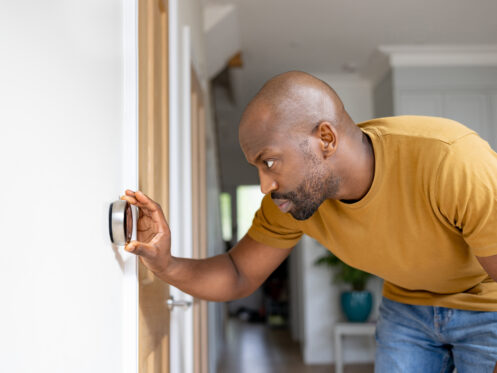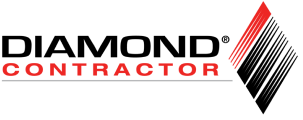The freezing Montana winters make it essential that your HVAC system is in good shape and constantly supplies effective heating. Heating a house in our climate is always fairly expensive, but it can be even more so if your HVAC system isn’t functioning properly. That’s why it’s important that you follow this checklist so you can make sure your HVAC system is properly maintained, working efficiently and operating safely.
Check Your Air Filter Regularly
One of the most common mistakes many people make when it comes to their HVAC system is going too long between air filter changes. The basic recommendation is that you should check the air filter monthly and replace it every one to three months during the times of the year when your HVAC system runs daily. If you wait too long, the filter can get extremely clogged and make your heating perform far less effectively. That means you’ll end up with long heating cycles and higher heating costs. A clogged filter also makes it more likely you’ll need to have your heating repaired. Even worse, it can easily lead to your furnace overheating and developing a fatal issue, such as the heat exchanger cracking.
When checking to see if you need to replace the air filter, the main things to focus on are the color of the filter and how much debris there is on its face. Once the filter begins looking darker or is covered in quite a bit of debris, you should replace it as soon as possible. The one thing you don’t want to do is take the filter out and leave your heating still running for any amount of time. This is because it will result in lots of debris getting sucked into the furnace and creating numerous issues. That’s why it’s a good idea to always make sure you have a spare filter on hand so you can just slide it in immediately after removing the old one. You can also save a bit of money by buying bulk packages of filters instead of just purchasing individual ones.
Monitor the Color of Your Furnace’s Flames
Many people believe that furnaces always produce at least some carbon monoxide as a byproduct when they burn gas, but this isn’t actually the case. As long as natural gas fully combusts, it burns completely cleanly and only produces carbon dioxide and water vapor. The only time carbon monoxide is produced is when the gas doesn’t fully combust, which usually happens due to the flames not receiving sufficient oxygen.
The color of the flames your furnace produces can tell you a lot about whether it’s working properly and operating safely. On most furnaces, you can easily see the flames by looking through the slots on the door of the furnace. The flames should always be strong, steady and bright blue, as this indicates the furnace is burning cleanly and the gas is fully combusting. Weak yellow, orange or green flames that flicker are a sign of incomplete combustion and that the furnace isn’t burning cleanly and not working properly. It also means there’s a good chance carbon monoxide is being produced.
While the carbon monoxide should just flow directly outside, it could leak out into your house if your furnace isn’t properly vented or if there’s a crack in its heat exchanger. As such, it’s essential that you get your furnace inspected immediately if you ever notice that the flames are any color other than blue. That way you can get the issue taken care of and eliminate the risk of anyone in your house getting carbon monoxide poisoning.
Inspect Your Furnace for Rust
Another important part of ensuring your furnace is still safe to operate is to inspect it for any signs of rust each time you check or replace the air filter. Rust happens due to condensation forming on the furnace and is almost always a sign that the furnace isn’t properly vented. As such, any rust spots are another indication you should have your furnace immediately inspected.
In a conventional furnace, the combustion fumes still retain quite a bit of heat when they flow into the exhaust flue on their way outside. If a furnace isn’t vented correctly, some of the hot combustion fumes end up getting trapped in the exhaust flue and quickly cooling down. As the fumes cool down, the water vapor condenses into liquid inside the flue and then drips down into the furnace, eventually causing it to start rusting.
Have a Professional Service Your HVAC System
The most important task for ensuring your HVAC system is properly maintained is to have a certified professional perform a complete inspection and maintenance service every winter. All heating systems have a variety of essential maintenance requirements that need to be performed regularly for the system to perform properly. Failing to have all of the necessary tasks done will eventually lead to decreased heating performance, high energy bills, breakdowns, etc. Preventative maintenance is also crucial for ensuring an HVAC system has as long of a life as possible.
Some of the most critical tasks when maintaining a furnace are cleaning the burners, cleaning and testing the flame sensor and testing all of the other safety sensors like the pressure switch. Cleaning the burners helps to prevent incomplete combustion and carbon monoxide from being produced. Cleaning and testing the flame sensor ensures that the furnace always turns on when it should and always completes a full heating cycle. If the flame sensor is overly dirty or malfunctioning, it will often result in the furnace either only staying lit for a few seconds or frequently going out before it should. If there’s any issue with the pressure switch, it can prevent the furnace from ever lighting as the gas valve only opens once this switch gets activated.
Experts also recommend having a vent test and combustion analysis performed yearly. The purpose of a vent test is obviously to make sure the furnace is properly vented. It also ensures that there are no issues like back-drafting that could cause the combustion fumes to escape into the house.
A combustion analysis involves testing to see what the combustion fumes contain to ensure the furnace isn’t producing carbon monoxide. The technician will also check the air coming out of the furnace to make sure it contains no harmful substances. This is useful as it can allow the technician to find hidden issues. For example, they often won’t be able to spot a hairline crack in the heat exchanger when they visually inspect the exchanger.
Contact Us Today
For the past 80 years, Central Heating & Air Conditioning has been the go-to source for indoor comfort services in Billings and the surrounding areas. We specialize in heating and air conditioning maintenance and will do whatever it takes to make certain your HVAC system remains in good condition and works as effectively as you need it to. We can service and repair all HVAC makes and models and are available 24/7 should you ever find yourself facing a heating or cooling emergency. For more information on the benefits of signing up for our maintenance plan or to schedule a service call, call us today. We also provide heat pump services!
Contact Central Heating & Air Conditioning today!







